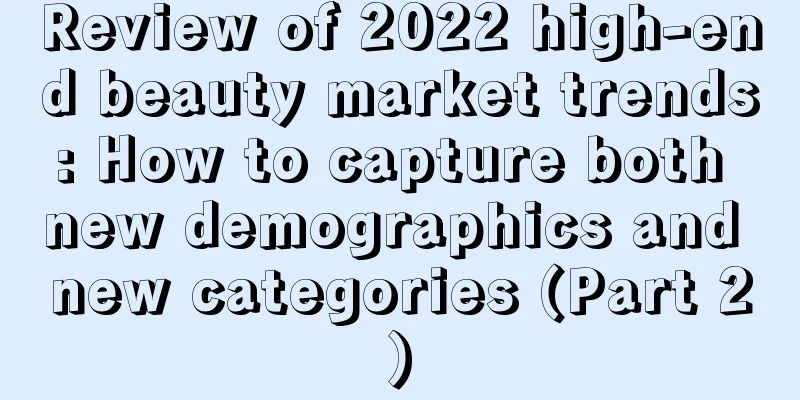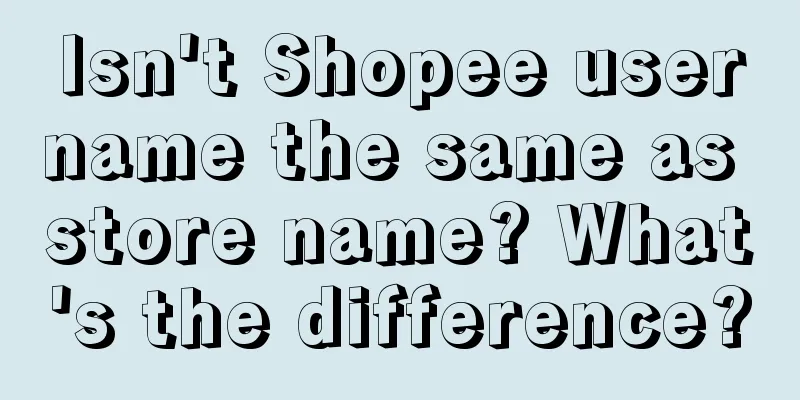Review of 2022 high-end beauty market trends: How to capture both new demographics and new categories (Part 2)

In the past, the most criticized problem of domestic beauty brands was that they “focused on marketing and neglected research and development”. But this is not entirely true. “Focus on marketing and neglect research and development” was once seen as an industry shortcut because the traffic dividend at the time could indeed help brands quickly achieve a goal from 0 to 1, and the formula of “celebrity endorsement + influencer recommendation + live streaming” could work. However, no brand that simply applied the above formula made it into the top ten list of Tmall Double Eleven beauty category transaction volume in 2022. The only two brands that made it into the list were PROYA and WINONA. The former has twenty years of accumulation of R&D, products, and brands, while the latter has successfully transformed from B to C with the strong R&D investment of Beitanni Group. In fact, the rise of international beauty brands, in addition to continuously expanding their business territory through "buying, buying, buying", also involves investing heavily in product research and development. According to a report by Ping An Securities, L'Oréal's R&D expenses in 2020 were close to US$1.2 billion, and the number of global R&D personnel was as high as 4,000, both of which were much higher than the other two world-class beauty giants. When international brands are always willing to invest heavily in product research and development to maintain their competitive barriers, domestic new consumer brands will be taking a gamble with a very low chance of success if they dig deep into products from the beginning. Where is the real blue ocean? Targeting the needs of new groups of people for new categories may be one of the strategies for catching up. Zhuben, which rose to prominence with its cleansing oil, and Winona, which focuses on sensitive skin, both illustrate this problem. As the Community Marketing Institute pointed out in the previous article, with more and more people born after 2000, men, and people in the sinking market gradually forming the consumer army in the high-end beauty market, and the existing high-end beauty consumers having more advanced, refined, and comprehensive knowledge of skin care/makeup, the growth rate of new categories such as sunscreen/primer/primer/eyebrow pencil/body lotion/perfume can be expected. How can brands reconstruct the touchpoints of communication with consumers in the face of new groups and new categories? The Community Marketing Institute continues to analyze this. 1. How do new groups make decisions when faced with new product category opportunities?There are three key words for the new group: post-00s, male, and sinking market. According to BCG&TMI data, 9% of those born after 2000 contributed 6% of the consumption amount. What are the characteristics of the post-00s? They mostly grew up in second-tier and lower-tier cities. As they are new to the workplace and have small wallets, they are more sensitive to prices and contribute a smaller proportion of the consumption amount. On the bright side, the post-00s are very bold in spending money on their favorite "treasures"; the post-00s are exposed to high-end beauty products through online channels, especially when they are impressed by the fun and creativity on social platforms, so they are more likely to start with high-end cosmetics that are more emotional, and at the same time they are more cautious in making decisions about high-end skin care. This consumption profile also determines that when the post-00s make decisions, "cost" is a major principle: they prefer to compare prices online, are more affordable for high-end cosmetics with a slightly lower premium level, are more willing to try interesting and creative beauty products, and emphasize "durability" (2.3x) when choosing high-end skin care products, followed by "patent" (1.7x) and "ingredients" (1.6x). In the BCG&TMI survey, 17% of male customers contributed 12% of the consumption amount. Compared with women, the proportion of men over the age of 36 is larger, because the high-end products they buy are often perfumes, which they need for personal use and can also give as gifts. Therefore, they can not only continuously upgrade products (for their own use and self-pleasure), but also pay more attention to product functionality, advertising, and packaging experience (giving as gifts brings face). Men will also be more loyal to brands. When new male customers make decisions based on their own needs, if they buy high-end skin care products, the categories they choose are more limited to facial cleansers, facial essences, toners, and lotions. The decision-making process is relatively decisive: "Is it effective?", "Are the ingredients safe, natural and non-allergenic?", "Is the brand well-known?", "How is the texture and skin feel?" can often determine the outcome of the order; if they buy high-end perfumes (with a certain purchasing base), new male customers are more willing to make decisions based on high prices, brands, and more formal official channels. When new male customers make gift-giving decisions, they are often impressed by brand advertising/product placement. They prefer to choose lipstick/lip balm, eye products, and perfume as gifts, and are accustomed to placing orders on official apps/WeChat mini-programs/shopping guides on WeChat. In general, those born after 2000 are more easily impressed by high-end cosmetics that are emotional and have content. Brands need to actively put out interesting content tailored for celebrities/products on social platforms, and try to actively lower the consumption threshold through trial/sample/offline experience and other means. For new male customers, high-end skin care products need to clearly demonstrate the product value points, and high-end perfumes require a moving brand advertisement and more dimensional touchpoints for perceiving the product fragrance/emotion. Establishing private domain touchpoints after acquiring customers can easily lead to effective repeat purchases. 2. From online to offline, how can brands reconstruct touchpoints?In terms of sales contribution, except for perfume, which is also highly dependent on offline sales, the online and offline sales of skin care and cosmetics are almost equal. In terms of decision-making time, it is generally high-end skin care > high-end cosmetics > high-end perfume. High-end perfumes can be tried offline, and once the store can impress consumers with the product experience and brand story, they can often achieve on-the-spot purchases. Apart from this special case, whether or not more than three cross-channel touchpoints can be established with consumers is often the key to stimulating interest in product recommendations. These touchpoints are more distributed in sales channels (77%), especially official channels such as offline counters, offline flash stores, official websites/Apps (77%*54%), followed by social platforms such as WeChat, content, and short videos (54%). Different channels then attract different customer groups, influencing their decision-making characteristics. First of all, the official channel has obvious appeal to people with an annual income of more than 500,000 yuan. They often spend around 3,000 yuan per year on high-end skin care/high-end cosmetics here, because not only is the channel formal, but they can also buy specific/limited edition/first-release products, and it is convenient to add shopping guides on WeChat to form subsequent communication points. Therefore, whether or not we can use official channels as a base to build a diversified membership experience/membership service system is an effective way to increase user activity and enhance the commercial value of high-quality users. For example, L'Oréal Group has created a brand home mini program, including a virtual rose manor created by Lancôme, where users can upgrade the manor gameplay by spending money and checking in; an AI skin test created by Vichy, where users can self-test online, create a profile for their skin, and form a customized skin care plan; and Shu Uemura's AR makeup trial, where consumers can complete color testing online... Secondly, live streaming e-commerce is more attractive to customers in third-tier and lower cities with annual income below 300,000 yuan. They are more willing to pay 1,900 yuan per year for high-end cosmetics here because the products are cheaper and it is convenient to learn how to use the products. Therefore, in addition to conducting self-broadcasting on Douyin, an increasingly common trend is that brands such as Estee Lauder and Lancome are also using video accounts to conduct regular live broadcasts, thereby activating private domain touchpoints and public domain traffic (the links are generally live broadcast appointments, appointment reminders, and live broadcast traffic), and improving customer communication efficiency. Finally, in terms of social channels, in addition to high-end cosmetics brands being able to initiate promotions on text/short video social platforms such as Xiaohongshu and Douyin, using interesting and fun content to attract the attention of young people, especially those born after 2000, for categories such as perfume that have certain identity identification, strong emotional attributes, emphasis on conveying brand tone, and certain gift-giving attributes, the WeChat ecosystem and even the Tencent ecosystem based on acquaintance relationships seem to be better channels for establishing brand touchpoints. Facts have proven that celebrity endorsements and influencer recommendations are still effective. The key is to use the right categories, choose the right celebrities/influencers, and tailor-make interesting content. For example, in the collaboration between Estee Lauder and Luo Yizhou, Luo Yizhou's out-of-frame materials can intuitively show DW's high-level makeup-lasting effect. For example, in the collaboration between Charlotte Tilbury and Gong Jun, consumers can connect to Gong Jun's color call by sliding the gemstone dial. These are all creative ideas that are very consistent with product features and have the potential to spread topics. It is no secret that high-end perfumes have taken over the WeChat Moments, using the acquaintance ecosystem/likes from friends to more easily output high-quality ads/seize user awareness: DIOR, Jo Malone, Margiela, BYREDO... In exploring emotional connections with consumers, DIOR Wild Men's perfume has created a playlist called "Wilderness in Mind", using road music to match the outdoor feel of DIOR Wild Men's fragrance, thus triggering resonance; BYREDO can even recommend different fragrances based on consumers' favorite music styles, using different backgrounds and bottle caps to connect consumers' emotional world in multiple dimensions. 3. Conclusion: How can we capture both new groups and new categories?As mentioned in the previous article of the Community Marketing Institute, the high-end beauty market has maintained strong growth in the past year, which may be based on the more advanced skin care/makeup knowledge mastered by consumers, or the more refined and comprehensive facial/body management. At the same time, the post-00s, men, and the sinking market are gradually forming a large army of high-end beauty consumers - although the amount of consumption they contribute is still limited. Taking into account the characteristics of various beauty categories and the features of new customer groups, we believe that high-end skincare, high-end cosmetics, and high-end perfume brands may need to make the following strategic adjustments in order to capture consumption trends in a timely manner and effectively reach new customers. First, high-end skin care is a category that is more functional than emotional. Its market penetration, premium level, and decision-making time cost are much higher than other categories. It is a core category that differentiates beauty brand assets. There is still room for high-end skin care to expand into sub-categories, such as sunscreen products. There is room for both categories and new customers, such as men with refined aesthetics and self-use needs. The focus of high-end skin care brand building touchpoints revolves around official positions (especially private domains based on the WeChat ecosystem), and using diversified experiences and services to increase user activity can generate considerable repurchases and bring in new customers. Second, high-end cosmetics is a category that is more emotional than functional. The combination of celebrity endorsements, influencer recommendations, and live streaming sales is still effective, but the products must conform to the celebrity’s personality characteristics/the influencer’s recommendation content must be interesting/live streaming sales must explain the product’s usage in a targeted manner. The core is to shorten the consumer decision-making chain. In the past year, the new growth of high-end cosmetics mainly came from those born after 2000. As they are price sensitive, those born after 2000 often switch to high-end skincare from high-end cosmetics. Therefore, it is crucial for brands to improve the cost-effectiveness of products and the speed of launching new products. Third, high-end perfumes still emphasize offline counters in terms of channels, but online brand advertising/more detailed product story introductions/fragrance matching tests and other means can allow consumers to experience the emotions of perfume in a three-dimensional way. As there is a continuous demand for upgraded perfumes/gifts, and a large increase in the demand for perfume for personal use over the past year came from men over 35 years old, who are highly loyal to brands and pay attention to the exquisiteness of product packaging and advertising in Moments while carrying out private domain operations, it is necessary to build private domain touchpoints on WeChat. Author: Editorial Department WeChat Official Account: Community Marketing Research Institute |
<<: Year-end review | In 2022, is live streaming sales, which keeps “crashing”, still popular?
>>: 2022 Christmas Creative Review [Part 2]
Recommend
Why shopping makes people anxious
As the end of the year approaches, there are more ...
The secret of a 30% viral article rate: Xiaohongshu's popular article topic selection SOP
Whether it's strategy or playing style The mos...
Various data positions, a complete analysis of the truth
In the digital age, data jobs are springing up lik...
"Internet celebrity with millions of fans" Xiucai title: neglected emotions of middle-aged and elderly people and the neglected silver hair market
Xiucai, who frequently appears in shy actions, has...
Taobao Live can no longer sit still as it becomes an MCN
In recent years, live streaming has become very po...
Is a higher Amazon sell-through rate better? How can Amazon improve its performance?
Many merchants on Amazon are concerned about the s...
In the Olympic marketing war, most brands find it difficult to handle the overwhelming traffic
The Paris Olympics is about to open. What are the ...
How to start a Shopee store? What are the tips?
There are many merchants doing cross-border e-comm...
Seven paths to brand planning
This article mainly shares seven paths of brand pl...
Moutai frequently collaborates with brands: the 400-year-old brand is also working hard to fight against aging
This article explains the marketing strategy behin...
How can brands get rid of the vortex of “marketing involution” from the root?
Editor's note: The current trend of "invo...
Connecting the membership system may be the best solution for Meituan
Meituan has expanded its "God Member" pr...
What are the best things to sell on Amazon for Christmas? What are the options?
Cross-border e-commerce platforms like Amazon natu...
Can I get my money back if my store is closed by Amazon? How can I get my money back?
There are still many domestic merchants opening st...
What are the cross-border e-commerce logistics? Introduction to the four major models
I believe everyone knows how popular the cross-bor...









